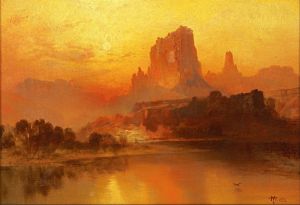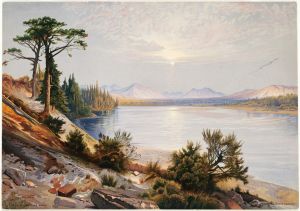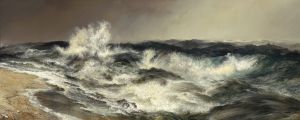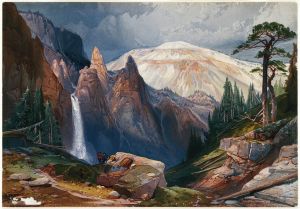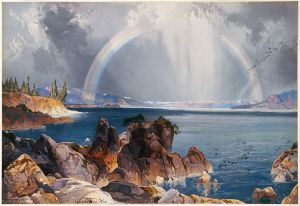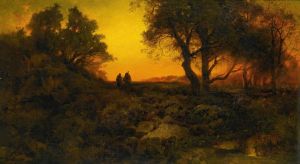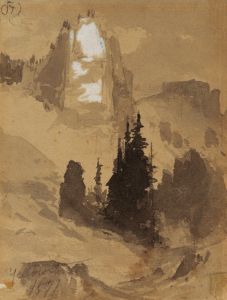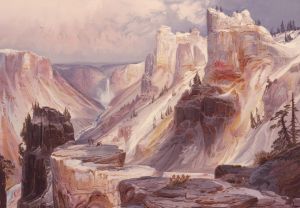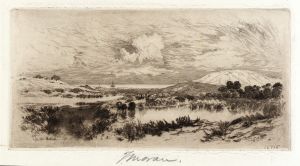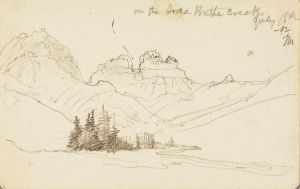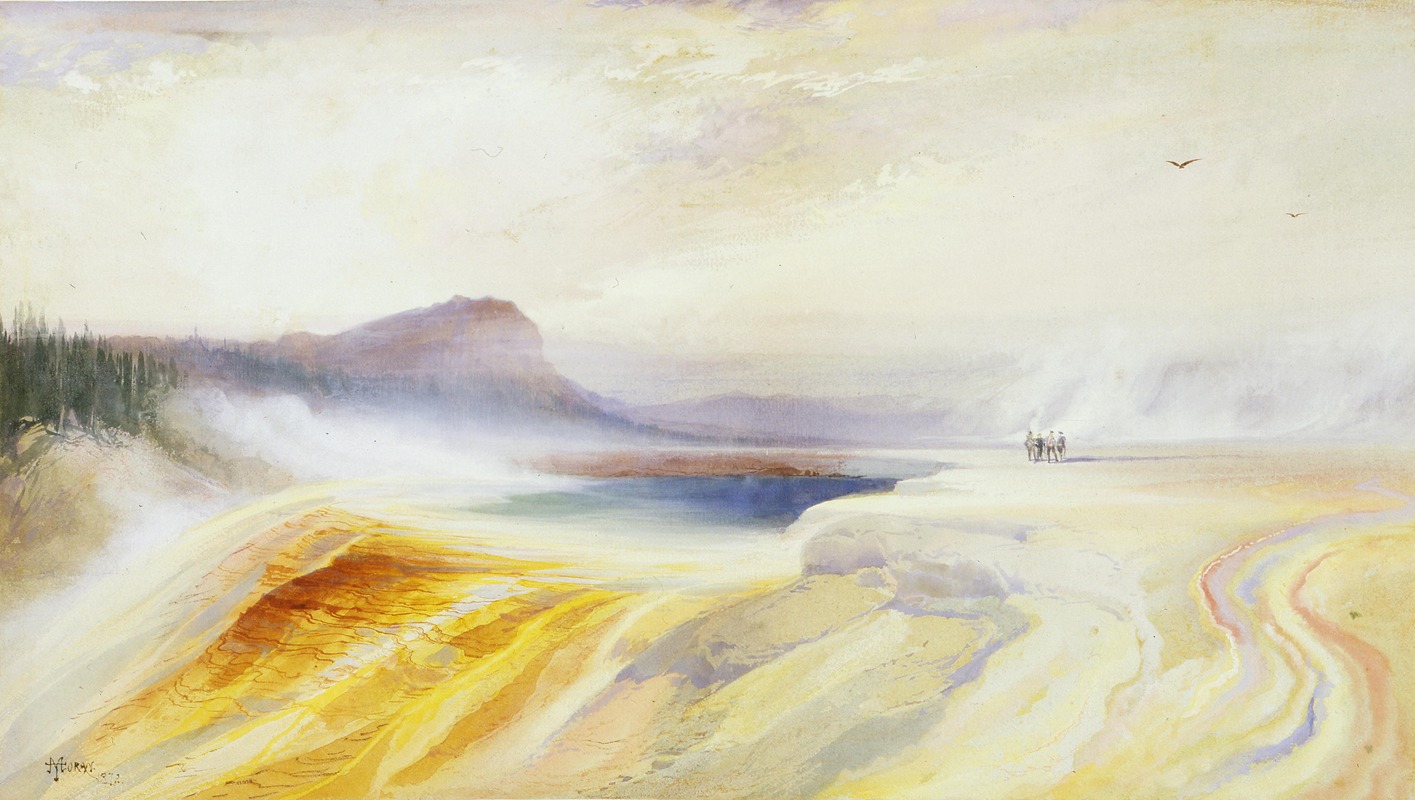
Great Blue Spring of the Lower Geyser Basin, Firehole River, Yellowstone
A hand-painted replica of Thomas Moran’s masterpiece Great Blue Spring of the Lower Geyser Basin, Firehole River, Yellowstone, meticulously crafted by professional artists to capture the true essence of the original. Each piece is created with museum-quality canvas and rare mineral pigments, carefully painted by experienced artists with delicate brushstrokes and rich, layered colors to perfectly recreate the texture of the original artwork. Unlike machine-printed reproductions, this hand-painted version brings the painting to life, infused with the artist’s emotions and skill in every stroke. Whether for personal collection or home decoration, it instantly elevates the artistic atmosphere of any space.
Thomas Moran's painting "Great Blue Spring of the Lower Geyser Basin, Firehole River, Yellowstone" is an evocative representation of the natural beauty found within Yellowstone National Park. Moran, an English-born American painter, is renowned for his depictions of the American West, particularly the Yellowstone region. His works played a significant role in the establishment of Yellowstone as the first national park in the United States in 1872.
Moran first visited Yellowstone in 1871 as part of the Hayden Geological Survey, led by Ferdinand V. Hayden. This expedition was pivotal in documenting the unique geothermal features of the area, and Moran's artistic contributions were instrumental in conveying the park's splendor to the American public and Congress. His paintings, alongside the photographs of William Henry Jackson, helped to persuade lawmakers of the need to preserve Yellowstone as a national treasure.
The "Great Blue Spring" painting captures one of the many geothermal features that characterize the Lower Geyser Basin in Yellowstone. This area is known for its hot springs, geysers, and fumaroles, which are fueled by the volcanic activity beneath the park. The Firehole River, which runs through the basin, is heated by these geothermal features, creating a unique ecosystem that supports a variety of plant and animal life.
Moran's work is characterized by its vivid use of color and attention to detail, which are evident in this painting. He was known for his ability to capture the ethereal quality of light and the vastness of the landscapes he depicted. In "Great Blue Spring," Moran uses a palette of blues and greens to convey the serene yet dynamic nature of the spring and its surroundings. The painting reflects Moran's romantic style, which often emphasized the sublime and awe-inspiring aspects of nature.
The impact of Moran's Yellowstone paintings extends beyond their artistic value. They were crucial in shaping public perception of the American West and fostering an appreciation for the preservation of natural landscapes. Moran's work helped to establish a visual identity for Yellowstone and contributed to the broader conservation movement in the United States.
Today, Thomas Moran is celebrated as one of the foremost painters of the American landscape. His works are held in high regard and are featured in numerous museums and collections, including the Smithsonian American Art Museum and the National Gallery of Art. "Great Blue Spring of the Lower Geyser Basin, Firehole River, Yellowstone" remains a testament to Moran's skill as an artist and his role in the early conservation efforts that led to the creation of national parks.
In summary, Thomas Moran's painting of the Great Blue Spring is not only an artistic masterpiece but also a historical artifact that played a part in the preservation of one of America's most cherished natural landscapes. Through his art, Moran captured the imagination of a nation and helped to ensure that the wonders of Yellowstone would be protected for future generations to enjoy.





